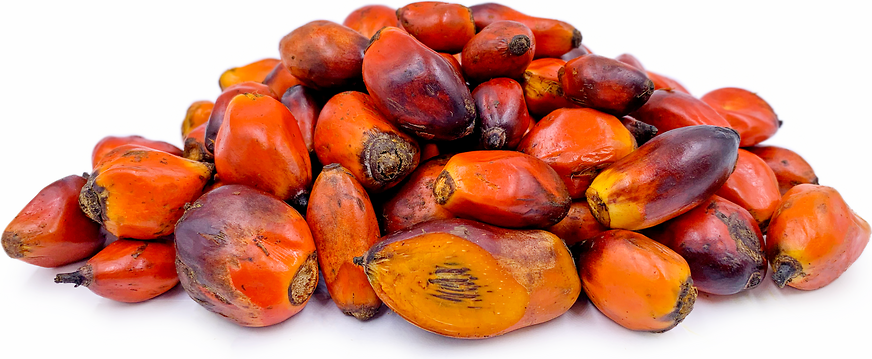
Nigeria ![]()
HOW TO COOK BANGA Stew
If you’ve not explored some basic Nigerian delicacies, then you’re missing out! Banga soup is one of these Nigerian delicacies and is native to Niger Delta and Southern Eastern parts of Nigeria.
Welcome to Nigeria!!
Banga soup can be eaten with various dishes, I mean it has is unique with the independent recipes such as Pounded Yam, Semolina, Garri, and Cassava fufu. It is referred to as Ofe Akwu which means Soup made from palm fruit where Ofe means soup while Akwu means Soup or stew.
Soup from Palm fruit? Funny right? Well, good thing you’re aware of it now. As it is not something to miss out on.

So how is it cooked, I’m pretty sure you should ask that question because you’re expected to explore this newfound delicacy.
Firstly, you need to extract the oil from the palm fruit and it’s totally different from the normal red oil used in cooking Nigerian recipes because that one is extracted at high temperatures while extracting for Banga soup is done at low temperature and it is a mixture of oil and water. It contains less saturated fat than conventional palm oil.
Hopefully, the ingredients are quite easy to locate in your home country:
Ingredients for Banga Soup
- 1 kg Palm Fruits or 800g tinned Palm Fruit Concentrate
- Assorted meat (beef)
- Dry Fish
- Basil for Ofe Akwu or dried and crushed bitter leaves for Delta-style Banga Soup
- 2 medium onions
- 2 tablespoons ground crayfish
- Salt and Chilli Pepper (to taste)
- Ogiri Okpei (Iru)
- 1-2 big beef stock cubes
Here is what you’d do after you’ve got the necessary ingredients:
Extract the palm fruit concentrate from the palm fruit, if you’re an adventurist and using fresh palm fruit however, you could also purchase the tinned Palm fruit concentrate.
Cook the beef, the dry fish, and dice a bulb of onions along with the stock cube till done. Chop the scent leaves into bits after you’ve washed them. These leaves are very important as they give the Banga Soup it’s aroma and taste. It might not be so common if you’re not in Nigeria so I’d recommend you use other leaves such as pumpkin. If you want to eat it with Starch, then you shouldn’t bother using vegetables but you can use crushed bitter leaves anyways.
The next thing to do is to cut the remaining bulb of onion and pound the crayfish, ogiri okpei (you can ask around, it’s not unpopular), and pepper in a blender or dry mill.
Cooking Directions
Set your pot on the gas and start cooking the palm fruit extract. When the palm fruit extract is boiled, red oil begins to come up at the surface. Cook till it becomes thick according to how you want it. Then add beef, dry fish and stock, the onions, crayfish, pepper and let it cook well. Add the scented leaves or vegetable, salt and taste it. You should let it simmer for a few minutes and there you go. Serve with rice or Semolina, or Pounded Yam.
“I bet you’d become a fan once you try it out the first time and don’t get so bad if it isn’t as mouth-watering as you expected at first. The more you cook it, the better you will get at it. Don’t give up!”
Boil palm fruit for about 30 minutes till the husk is tender. Strain the water out of the pot and pour the palm fruits into a mortar in batches. Pound till the husk comes off the seed. Scoop out the pounded fruit in batches and place it into a big pan. Add hot water a little at a time while squeezing the palm fruit juice out of the kernels.
Nutritional Information
The African locust beans seeds contain 35% protein,
16% carbohydrate and 29% lipid while the bark contains between 12 to 14% tannin.
The pod contains 60% carbohydrate whereby 10 to 20% of this carbohydrate is sucrose, with a 29 milligram of vitamin C per 100 gram of the pod.
The husk is made up of 27 to 44% tannin.
The ripe sweet yellow pulp of the locust beans contains 60% simple sugar (except maltose), higher sucrose and cellulose but less ascorbic acid.
Parkia biglobosa is also an excellent source of essential vitamins and minerals such as calcium, fat, potassium, ascorbic acid, and phosphorus.
The seeds also have some antinutritional contents such as tannin, phytate, and oxalate.
1. Anti-oxidizing Properties
2. Wound Healing Properties
3. Treatment of Hypertension
4. Boosts the Immune System
5. Dental Care
6. Dermatological Care
7. Treatment of Respiratory Infections
8. Treatment of Gastrointestinal Disorders
9. Ocular Care
10. Reduction of Blood Pressure
11. Anti-malarial Properties
12. Antibacterial Properties
13. Treatment of Coccidiosis





